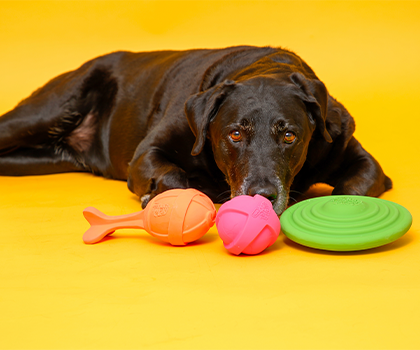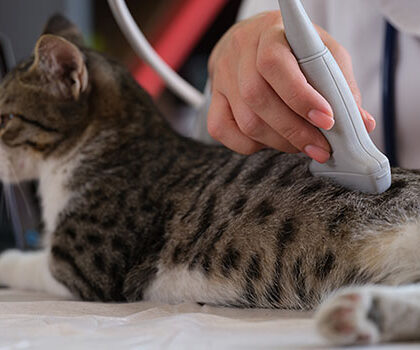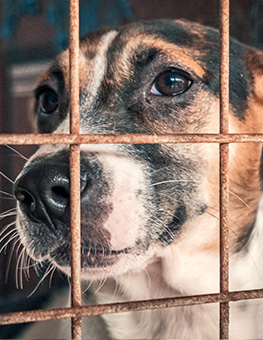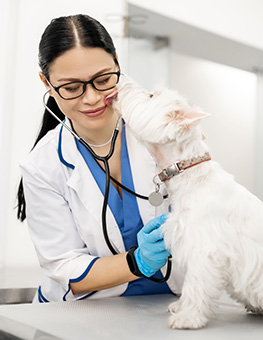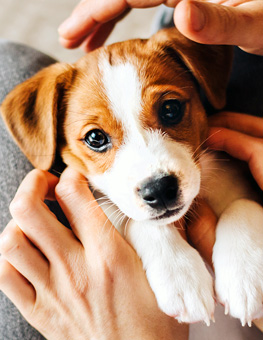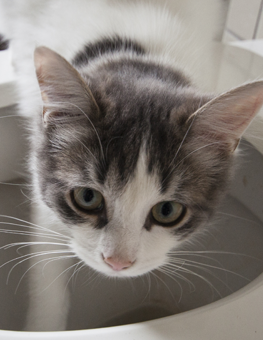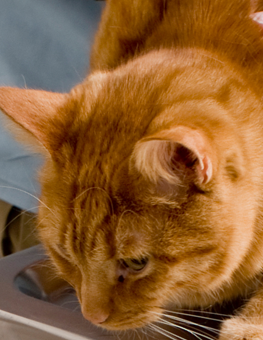Is Your Dog Overweight?
Canine obesity is an escalating problem in the U.S. and can severely impact a dog’s quality of life.
If your dog is too heavy, she’s not alone. Recent studies suggest that 40 percent of canines in the U.S. – roughly 17 million dogs - are overweight (5-19 % over ideal weight) or obese (20+% over ideal weight). And the numbers are climbing.
Obesity Compromises Your Dog’s Health
Like humans, obesity compromises your dog’s health in numerous ways.
- Obese dogs are at higher risk for developing serious health problems such as arthritis, heart disease, and respiratory conditions.
- Excess weight puts strain on joints and ligaments which can result in soft tissue injuries and joint problems. For example, hip dysplasia - a painful and often debilitating condition - is becoming more common as obesity rates climb.
- Obesity can severely affect your dog's quality of life by making exercise and play more difficult or even impossible.
- Obesity ages all body structures prematurely and can shorten your dog’s lifespan.
Some Dogs are at Greater Risk
There are several factors that can increase your dog’s chances of becoming overweight.
- Diet and lifestyle: Not surprisingly, overfeeding and lack of exercise are the two biggest contributors to canine obesity. Some specific risk factors include:
- Breed: All breeds have a predisposition for obesity when the calorie intake exceeds the expenditure. Small breeds are especially vulnerable as they eat far more than their little bodies need.
- Gender and age: Neutered males and females and dogs aged 7+ are more prone to obesity.
- Hypothyroidism: This is a common disorder caused by an underactive thyroid. Symptoms include poor coat and skin, Weight gain or inability to lose weight, lethargy, and cold intolerance.
- Dogs who get less than 20-30 minutes of exercise daily.
- Dogs who live in multi-dog households because they tend to eat
more than dogs in single-canine homes.
- Dogs who are fed table scraps on a regular basis.
- Dogs who aren’t given a measured amount of food at each meal.
How to Check Your Dog’s Weight
Unless your dog is very obese, it’s not always easy to recognize if she has a weight problem. There is no such thing as a “standard” breed weight. Your dog’s correct weight depends upon her height, bone and muscle structure. Check her hips, ribs and neck for signs of excess weight. Have your vet check her over if you’re in doubt.
- Hips: Run your hands over your dog’s hindquarters. You should easily feel the bumps of her two hindquarters without applying pressure.
- Ribs: Place your thumbs on your dog’s back and run them along her backbone with your fingers over her ribs. There should be no extra padding between your hands and her ribs. Or, with your dog standing in place, put your hands on each side of her chest. You should be able to feel her ribs without applying added pressure.
- Neck: Pinch the flesh at the side of her neck above the shoulder with your thumb and index finger. If you can pinch more than half an inch of flesh, there is excess weight.
- Visual Signs: If her abdomen hangs down when you view her profile, or you can’t distinguish her waist from her ribs with a birds’ eye view, then she is too heavy.
- Lifestyle: If your dog pants excessively when she walks, has trouble climbing stairs or is becoming less active, don’t just assume it’s “old age.” Even in older dogs these are common symptoms of obesity if your dog is otherwise healthy.
See your vet if you suspect your dog is overweight. S/he will evaluate your dog’s physical condition and advise a safe, appropriate diet and exercise plan based on your dog’s age, breed, temperament and health.



